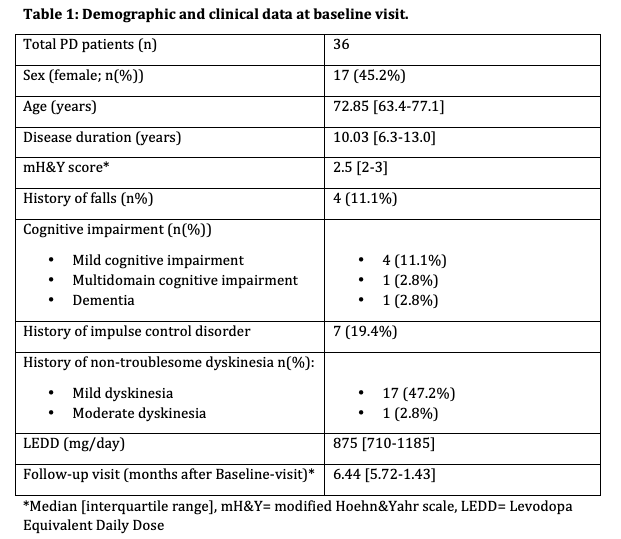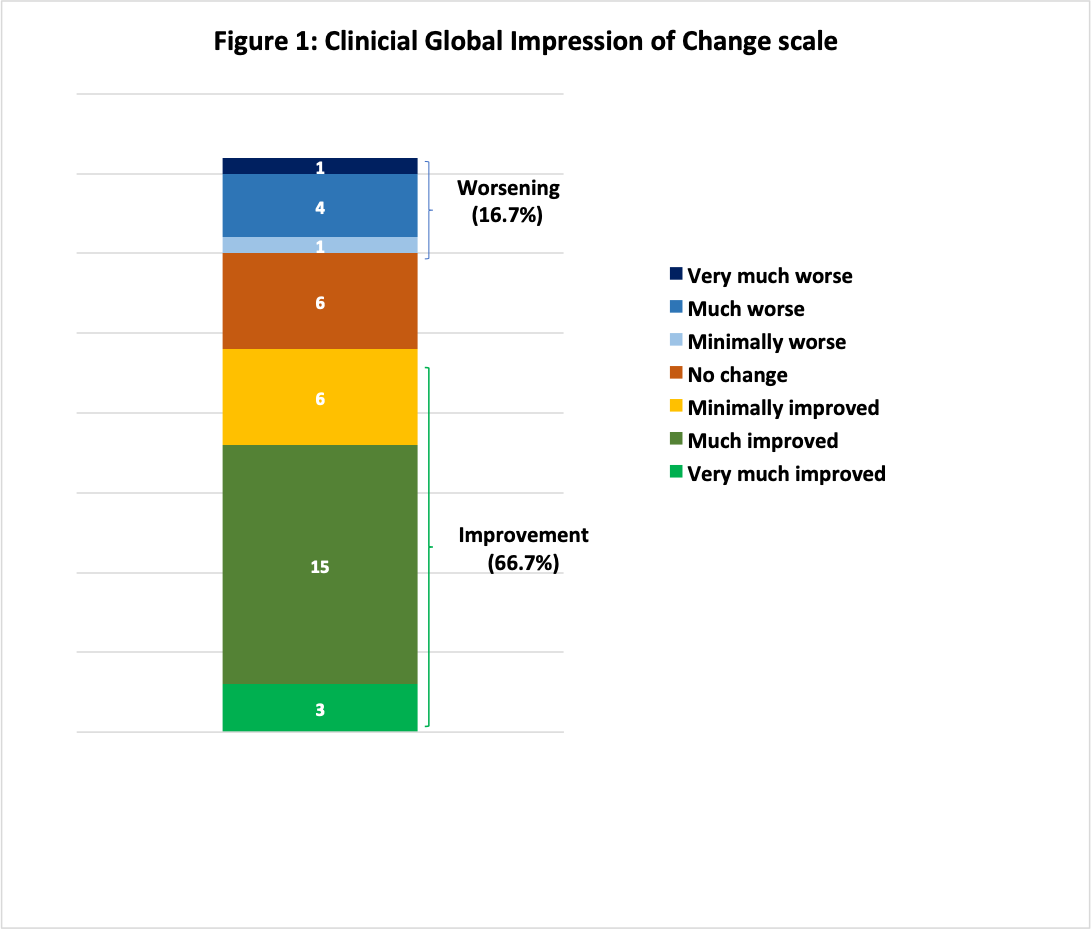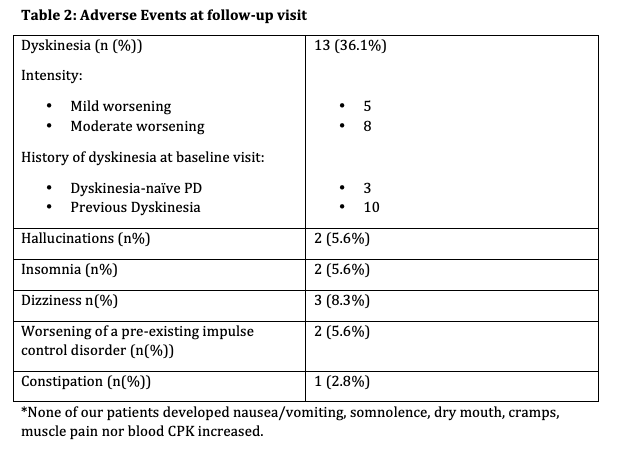Objective: To evaluate the effectiveness, tolerability and safety of opicapone as add-on to levodopa (LD) in the daily clinical practice in fluctuating Parkinson’s disease (PD) patients.
Background: Several controlled studies have shown the effectiveness of the Cathecol-O-methyltransferase inhibitor opicapone in reducing motor fluctuations in PD patients without eliciting serious adverse events. However, there are few reports describing the value of opicapone in the real clinical practice.
Method: Observational, retrospective, cohort study that included fluctuating PD patients who started opicapone 50 mg/day as add-on to levodopa. Demographic and clinical data were collected. Clinical effectiveness was assessed by the Clinical Global Impression of Change (CGI-C). The effect on dyskinesia and the presence of adverse events (AEs) were also assessed.
Results: We included 36 fluctuating PD patients. The clinical characteristics of patients are shown in table 1. Twenty-one patients showed non-troublesome dyskinesia at baseline (mostly mild). At the follow-up visit, 66.7% of patients showed a clinical improvement (CGI 1-3) and 16.7% a worsening (CGI 5-7) (Figure 1). Up to 52.8% of patients referred at least one AE (n=14 one AE/patient, n=3 two AEs/patient, and n=1 three AEs) of mild to moderate intensity. The worsening of dyskinesia was the most frequent AE (n=13, 36,11%), and it was more frequent in those patients with dyskinesia at baseline (p=0,035): 10 (76,9%) of them had preceding dyskinesia, while 3 (23,1%) showed this symptom for the first time. The frequency of AEs is described in Table 2. Eight patients (22,2%) withdrew prematurely from opicapone because of AEs and/or lack of benefit, seventeen patients (47,2%) maintained the treatment, six (16,67%) patients reduced the Levodopa Equivalent Daily Dose (LEDD) mainly because of AEs and five (13,9%) increased the LEDD because of an insufficient benefit. There were no differences between LEDD in baseline and follow-up visit (p=0.5091). We neither found predictive clinical variables associated with clinical improvement.
Conclusion: Our results indicate that opicapone provides a significant motor improvement in fluctuating PD, assessed by CGI-C scale. Dyskinesia is the most common complaint, specially in those patients with previous dyskinesia, and might be ameliorated adjusting the concomitant dopaminergic treatment.
To cite this abstract in AMA style:
L. Armengou Garcia, G. Martí-Andrés, R. Valentí Azcárate, I. Esparragosa Vázquez, C. Toledano Illán, R. Villino Boquete, R. Luquin. Opicapone in fluctuating Parkinson’s disease: The daily clinical practice [abstract]. Mov Disord. 2020; 35 (suppl 1). https://www.mdsabstracts.org/abstract/opicapone-in-fluctuating-parkinsons-disease-the-daily-clinical-practice/. Accessed December 23, 2025.« Back to MDS Virtual Congress 2020
MDS Abstracts - https://www.mdsabstracts.org/abstract/opicapone-in-fluctuating-parkinsons-disease-the-daily-clinical-practice/



